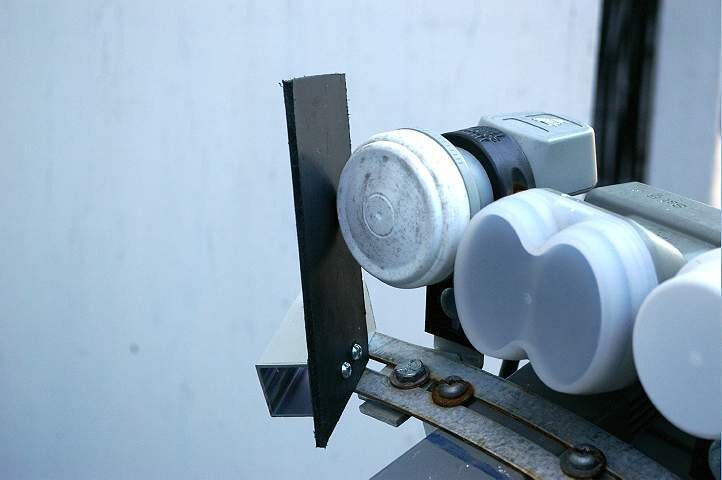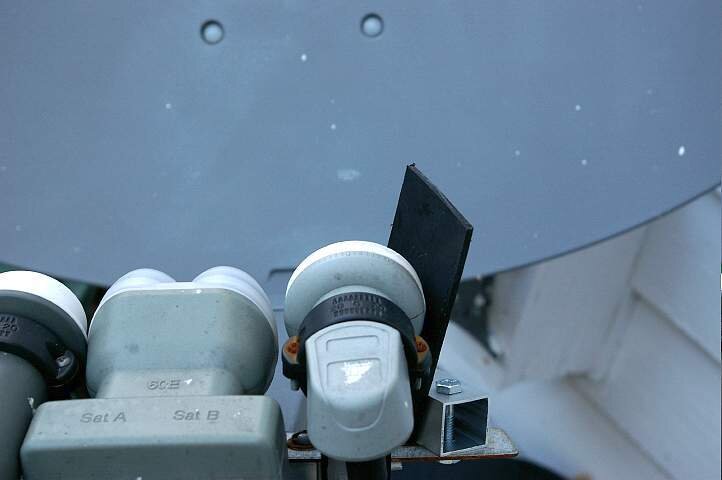I am in very good area for AMC4 (101) (EIRP of at least 50) so am able to get very good signal quality on all FTA channels. This is with an LNB which is six degrees off centre on a 60e dish. The lowest is 45 (threshold on a Pansat is usually around 30 for most channels) and a lot are quite a bit higher. Recently one scrambled channel became ITC (S*t*nt*) which I really want. Naturally, for some reason (probably because I really want it), it has the worst signal quality (10-19 usually) with major pixelation and is totally unwatchable. Only once since the channel became ITC has it hit the 30 mark.
I did try peaking the LNB on it, but with little success, and what little I gained (may be a point or two) I gave back up as it caused loss on the other transponders.
On Tuesday I was out and was going to do another attempt at a minor tweak. Anyhow, I was basically just experimenting to see if I was getting interference from another satellite and could somehow block it. So I grabbed a wooden paint stir stick which was lying on the ground and placed it beside the LNB and tilted it inward. Imagine my total surprise (and great delight) when the signal went up, and not just a bit, but up to a stable 27-30! Take the stick away, and back down to 15-19. So I temporarily installed a plastic lid in place until I had time last night to manufacture something more stable and lasting (and not so funny looking as the plastic lid).
The photos below of the "blinder", as I call it, are the finished project, and my signal has been without any pixelation and has been stable at 28-33 since I mounted it. There has been no loss at all on any other channel (and in fact transponder 11860 also seems to have gained a bit) which is surprising to me, since the edge of blinder projects across a portion of the LNB face.
Definitely well worth the effort to experiment!
I did try peaking the LNB on it, but with little success, and what little I gained (may be a point or two) I gave back up as it caused loss on the other transponders.
On Tuesday I was out and was going to do another attempt at a minor tweak. Anyhow, I was basically just experimenting to see if I was getting interference from another satellite and could somehow block it. So I grabbed a wooden paint stir stick which was lying on the ground and placed it beside the LNB and tilted it inward. Imagine my total surprise (and great delight) when the signal went up, and not just a bit, but up to a stable 27-30! Take the stick away, and back down to 15-19. So I temporarily installed a plastic lid in place until I had time last night to manufacture something more stable and lasting (and not so funny looking as the plastic lid).
The photos below of the "blinder", as I call it, are the finished project, and my signal has been without any pixelation and has been stable at 28-33 since I mounted it. There has been no loss at all on any other channel (and in fact transponder 11860 also seems to have gained a bit) which is surprising to me, since the edge of blinder projects across a portion of the LNB face.
Definitely well worth the effort to experiment!




